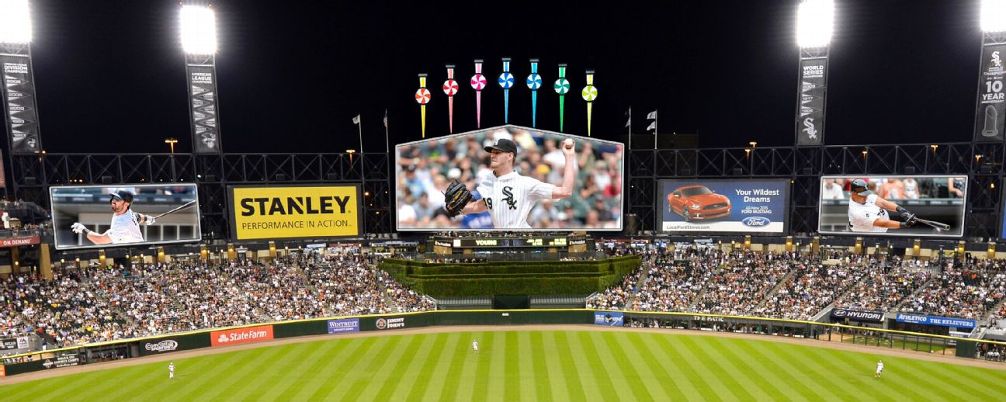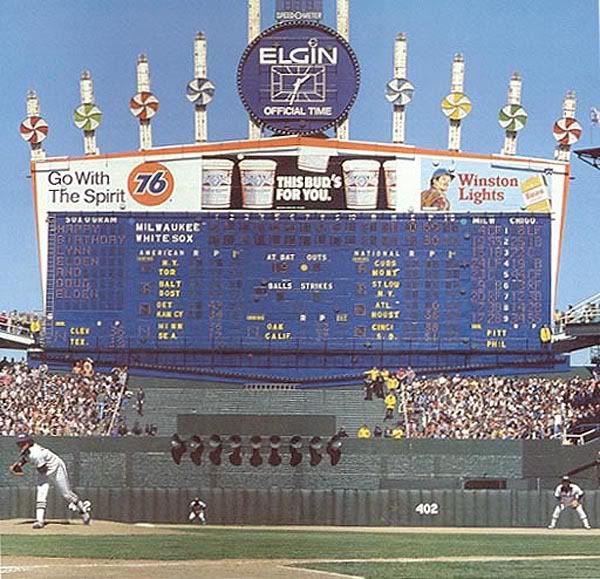The Chicago White Sox are embarking on another makeover of U.S. Cellular Field for 2016, and the first step is the installation of new outfield videoboards, as well as upgrades to the existing main scoreboard.
The three new videoboard — as shown above, in a rendering supplied by the Illinois Sports Facilities Authority, which is overseeing the $7.3 million expansion. The current U.S. Cellular Field videoboard is only 1,484 square feet, but the new videoboard will be 6,500 square feet and among the largest in baseball. The two new flanking videoboards will be 2,400 square feet apiece. All permanent ads on the three videoboards will be removed. In addition, the circular pinwheels on top of the main videoboard will be replaced with digital equivalents. From Crain’s Chicago Business:
Technical issues have plagued the left- and right-field video boards recently, with one or both malfunctioning during parts of White Sox games. Complicating matters is that White Way Signs, the Mount Prospect company that installed the right-field sign in 2009, is liquidating its assets after filing for Chapter 11 bankruptcy protection late last year. That meant the end of easy maintenance from the manufacturer, whose proprietary technology is installed in the sign.
ISFA, which oversees bond debt payments from construction of U.S. Cellular Field and the renovation of Soldier Field, will pay for the project in two phases. The first part will cover the two side video boards and cost approximately $3.25 million, coming out of the agency’s $9.8 million capital improvement budget for fiscal year 2016, which began July 1.
The remainder of the $7.3 million will be paid out of the stadium’s fiscal 2017 capital improvement fund budget—which is yet to be determined—even though all three video boards will be installed in time for the 2016 season.
White Sox officials say there will be plenty of other changes for the 2016 season.
There is, of course, a rich tradition of scoreboard technology associated with the White Sox. Former team owner Bill Veeck pioneered the use of the exploding scoreboard, featuring plenty of fireworks before, during and after a game.


